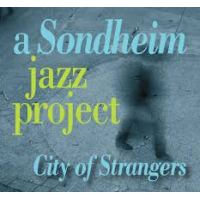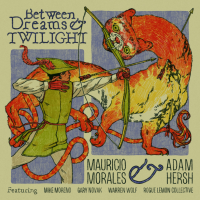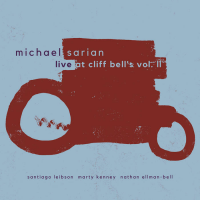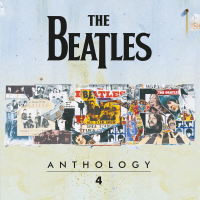Home » Jazz Articles » Album Review » Samuel Blaser Consort in Motion: A Mirror to Machaut
Samuel Blaser Consort in Motion: A Mirror to Machaut
Among his current projects, Consort in Motion is the most intriguing. The ensemble's 2011 self-titled debut featured legendary drummer Paul Motian anchoring a quartet with Blaser, pianist Russ Lossing and bassist Thomas Morgan performing adventurous reinterpretations of the early Baroque compositions of Claudio Montiverdi and his 17th century Italian contemporaries. This session, which differs in both approach and personnel, delves further into the past by adapting the late medieval court music of Guillaume de Machaut and Guillaume Dufay, while employing a more modern instrumental palette.
Since Motian's passing, Blaser reconfigured the ensemble, retaining Lossing as the sole original member. Veteran bassist Drew Gress and master drummer Gerry Hemingway helm the rhythm section, while Belgian multi-instrumentalist Joachim Badenhorst joins Blaser on the frontline. In addition to the expanded personnel, the most notable change to the lineup's instrumentation is Lossing's addition of Rhodes and Wurlitzer, whose feverish amplified tonalities imbue the proceedings with an electrifying Milesian undercurrent.
Blaser's interest in Davis' early fusion experiments can also be heard on One From None, but in this antediluvian setting the futuristic sound of Lossing's overdriven analog keyboards provides striking contrast to the date's reharmonized Gregorian plainchants. The aptly titled "Color" is exemplary, conjuring a roiling bitches brew of seething sonorities and volatile rhythms. Conversely, the stately "De fortune me doiy pleindre et loer" is given an authentically austere reading, while the lush opener, "Hymn," unites disparate threads, regaling with a series of probing solos underpinned by a latticework of hemiolas and isorhythms—contrapuntal rhythms common to the pre-Renaissance period.
Blaser himself eschews electronic effects, eliciting lyrical cadences that seamlessly alternate between introspective melancholy and expressionistic ardor, using controlled multiphonics and assorted mutes to add tonal color to his evocative statements. The stalwart rhythm section provides adroit accompaniment, with Hemingway's thunderous interpolations on the anthemic "Dame, se vous m estes lointeinne" a rousing highlight. Badenhorst and Lossing's virtuosic variations impart rich dynamics to the set; the former's sinuous ruminations on "Bohemia" and the latter's dulcet filigrees throughout "Cantus Planus" convey a full spectrum of harmonic invention.
Drawing on his conservatory training and fondness for classical music, Blaser continues to find contemporary parallels in compositions written centuries ago on A Mirror to Machaut. His bold arrangements juxtapose avant-garde concepts with ancient traditions, revealing a sophisticated approach that is both visionary and timeless.
Track Listing
Hymn; Douce dame jolie; Saltarello; Dame, se vous m estes lointeinne; Color; Cantus Planus; De fortune me doiy pleindre et loer; Bohemia; Linea; Introit; Complainte: Tels rit au main qui au soir pleure.
Personnel
Samuel Blaser
tromboneSamuel Blaser: trombone; Joachim Badenhorst: tenor saxophone, bass clarinet, clarinet; Russ Lossing: piano, Rhodes, Wurlitzer; Drew Gress: double bass; Gerry Hemingway: drums, percussion.
Album information
Title: A Mirror to Machaut | Year Released: 2013 | Record Label: Songlines Recordings
Tags
PREVIOUS / NEXT
Support All About Jazz
 All About Jazz has been a pillar of jazz since 1995, championing it as an art form and, more importantly, supporting the musicians who make it. Our enduring commitment has made "AAJ" one of the most culturally important websites of its kind, read by hundreds of thousands of fans, musicians and industry figures every month.
All About Jazz has been a pillar of jazz since 1995, championing it as an art form and, more importantly, supporting the musicians who make it. Our enduring commitment has made "AAJ" one of the most culturally important websites of its kind, read by hundreds of thousands of fans, musicians and industry figures every month.



























